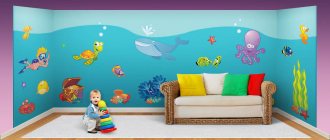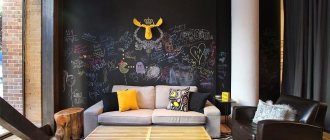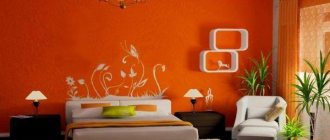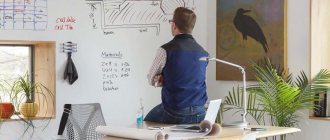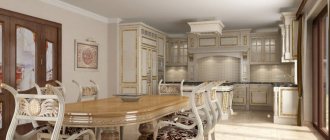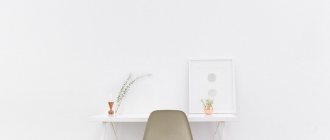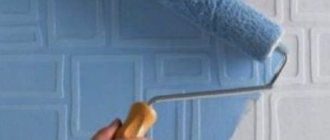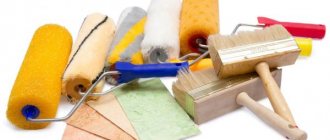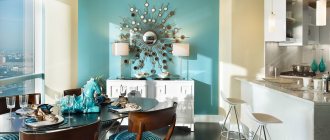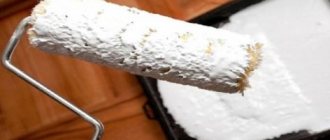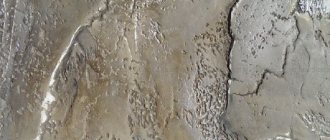Features of the material
Textured (another name is texture) paint is a finishing material with which a decorative wall surface is formed. It has a special composition that can simultaneously act as a finishing plaster and a paint coating. The essence of its decorating abilities is to create relief patterns on the surface that clearly stand out against the general background.
The decorative effect is achieved by using acrylic and other components that polymerize after applying paint, and various solid additives. This mixture allows the formation of a layer of varying thickness - from 0.5 to 3 mm. The introduction of granular ingredients allows you to increase the thickness of the relief to 8-10 mm. Initially, the paint is usually white, but the addition of pigments (color) allows you to give it any desired shade.
Product advantages:
- The use of acrylic as a binder component ensures moisture resistance, weather resistance, and increased mechanical strength. These properties allow the material to be used for both internal and external walls. They can be used to decorate kitchens and bathrooms.
- The viscous consistency and increased thickness of the applied layer make it possible to hide small defects, which in some cases makes it possible to avoid finishing plaster.
- You can apply paint to a wall made of almost any material - concrete, brick, wood, drywall, etc.
- The material does not contribute to the appearance of mold and fungi, does not absorb unpleasant odors, and is resistant to temperature changes and ultraviolet radiation.
- The paint is easy to apply, the surface treated with it does not require special care, it can be cleaned using a wet method.
- The selection of ingredients ensures environmental friendliness and hypoallergenicity.
- Textured wall paint (photo in the interior) is decorative and original.
Among the disadvantages, there is a high consumption of material (0.5-1.5 kg/m2). At the same time, reduced requirements for surface preparation make it possible to save on finishing plaster. A disadvantage is poor vapor permeability, but this problem applies to most paint and varnish coatings.
Advantages and disadvantages
The main distinguishing feature of textured finishing material is its ability to give surfaces an interesting relief. Structural wall paint is extremely popular due to its many advantages:
- Duration of operation - textured paint for wall decoration lasts on average 10 years, but traditional wallpaper lasts half as long. And then, those wallpapers that lose color will have to be replaced, but walls finished with textured paint can simply be painted;
- decorative textured paint for walls is highly resistant to mechanical stress and is not afraid of high humidity;
- the surface finished in this way has a harmonious appearance, creating a single composition;
- painting the walls in the kitchen with textured paint is a good solution for those who are familiar with the problem of washing: such a surface is easy to clean, unlike paper wallpaper;
- wide choice of shades - creating any tone you like is very simple - you just need to add the desired acrylic or water-based paint to the composition;
- the material is absolutely safe and does not cause allergic reactions;
- textured paint is extremely versatile: it has an aesthetic appearance (suitable for decorating a high-status living room), universal (easy to clean, therefore used in kitchens), has a high level of moisture resistance (can even be used in bathrooms);
- the material is practical - it has an antistatic effect that repels dust from the surface.
The only relative disadvantage is the need to prepare the walls for applying the material. But any finishing requires this, and structural paint, on the contrary, does not force us to carefully level the walls, as it effectively fills small cracks. And, of course, the cost: it is relatively high, since the material consumption is about 1 kg per square meter.
Related article: Faucet with hygienic shower
Types of material
Textured paint has several varieties, differing in their composition, consistency, dyeing technology and the effect created. It is offered in 2 versions:
- Ready to use. This is paint in a liquid consistency that has a specific color.
- Dry mixture. Sometimes it is called decorative plaster. This semi-finished product is diluted with water to the desired consistency. To give the desired color, the appropriate color is introduced.
When choosing an option, factors such as the planned period of work, storage conditions, and the desired color shade are taken into account.
Dry mixtures last longer in the absence of humidity.
Features of the composition
The performance properties and manufacturability of a material largely depend on its base. The following varieties are distinguished:
- Silicone paint. It is suitable for facade and interior work. The coating forms a vapor-tight layer that is resistant to external influences.
- Silicate paint. Has increased resistance to negative influences. When using a primer, it should be taken into account that it must be similar in composition to paint. The main disadvantage is the high price compared to other texture dyes.
- Mineral base. The paint is sold in dry form (powder) and is most often used for outdoor work. This is the most economical option. The composition includes cement and lime.
- Acrylic paint. One of the most common options. It is sold in finished form, but there are options that allow the introduction of ingredients to create additional effects and colors.
The type of filler components is important. They affect the consistency of the paint and the size of the relief. Taking this factor into account, the following types of paint are distinguished:
- with crushed gas silicate;
- with granite or marble grains (crumbs);
- with metal inclusions providing a reflective effect;
- filled with quartz sand;
- fiber filling (synthetic or natural);
- with wood sawdust;
- with shells to give a pearlescent effect.
Other additives may also be used in effect paints.
In particular, glitter and various drop-shaped and scaly particles are popular. To thicken the mass, modified starch is often introduced.
The height of the relief and its expressiveness depends on the size of the introduced particles. According to this parameter, paints are divided into the following types:
- Fine grain. The particle size should not exceed 0.5 mm.
- Medium grit. Particles with a size of 0.6-1 mm are used.
- Coarse grain. To create a high relief, particles up to 2-2.5 mm in size are introduced.
When choosing a textured paint, you need to familiarize yourself with its composition. The wall design style and relief pattern should be planned in advance. This will allow you to make a thoughtful choice of material.
Texture varieties
Using textured paint you can create various decor options and styles. However, there are several typical, basic textures that are formed on the wall surface:
- Simple relief. Most often, acrylic paint with sand (quartz) filler is used. The painting technology is simple.
- Mizuri. The relief is formed by high-viscosity paint, for which starch is added to it. When applying and smoothing, you need to apply significant pressure on the tool.
- Marseille wax. This coating can imitate tree bark, old stone, natural cork, etc. The main difference is the application of a film of special wax with decorative properties on top, which ensures color saturation.
- Atacama. The resulting effect can be compared to velvet with a specific softness and shimmering surface. The composition includes additives of quartz sand and metal pigments.
When comparing textured wall paint, you can clearly see the differences between the specified texture options from the photo.
Technological techniques
Painting the walls in an apartment with textured paint can be done in different ways, which provides different perceptual effects. The following main coloring techniques are distinguished:
Single color version
The decorative effect is achieved by the relief of the coating:
- The drawing is formed from straight (horizontal and vertical), wavy, spiral lines and strokes. To do this, use a paint brush or spatula.
- Dotted bumps (speckles) applied by splashing or spraying. Use a brush, spray gun or spray gun.
- Furrows and pits. They are formed with a brush or a pointed object (combs or combs can be used).
- Drawings and geometric shapes, cut out with a pointed object into the wet mass.
Two- and multi-color execution
A relief design or pattern highlighted in color against the general background looks especially attractive. The technology involves first creating a single-color background, and then forming a relief. The following techniques are used:
- Stencil. It can be purchased ready-made or made from plastic or linoleum. It is simply applied to a uniformly painted wall in the right place and filled with paint of a different color.
- "Star dust". Colored specks are applied to the general background using brushes with fairly stiff bristles. Paint is applied to it. The brush approaches the wall, the bristles are bent outward, and then released. The splashes fly randomly, forming an original speck. Several different colors can be used.
- Contrast. The method is to use several colors with sharp differences. These can be strokes of different shapes on a uniform background, geometric shapes, stripes. Simple technology is often used. Tape is glued to the wall, with the help of which the desired figure is limited. Next, it is painted with a brush or spray gun. After removing the tape, the desired pattern is formed.
- Aged material. Paint of a different color is applied pointwise to a uniformly painted surface by repeated touching with a brush or sponge.
- Rolling the pattern. In this case, use a rubber roller with a specific pattern cut out on it. By moving it, you can form a strip with a relief pattern.
If you have artistic skills, the desired pattern is simply drawn with a brush on the wall. In this case, masks are applied using thick paint, which ensures the relief of the design.
Application stages
In terms of their quality characteristics, textured paints are very close to textured plasters. But the former are a “thinner” version, and therefore have increased plasticity. When the material has been applied but not yet dried, we form a relief using textured special rollers for painting walls - thanks to them, intricate patterns appear on your walls, reminiscent of exotic plants, wrinkled leather or even textiles.
Related article: How to make a shower stall in the bathroom with your own hands - expert advice
To give the texture depth, you can add a contrasting shade of paint in some places on the surface. True, a successful result is rarely achieved by those who first engage in this type of activity.
Therefore, be sure to test on a small area of the surface. That's all, all that remains is to wait for the applied material to dry completely. As a result of such simple manipulations, you will receive an original and non-standard surface, which none of your friends will certainly boast of. Good luck with your experiments and bold decisions!
Non-standard techniques
In addition to these standard technologies, the question of how to apply textured paint can be solved in other ways:
- Creating the effect of wet silk. Paint with pearlescent inclusions is used. It is applied to the wall with a brush with fairly coarse bristles, and streaks are formed in a chaotic manner.
- Granite texture. An original, “authentic look” is obtained by using so-called “granite” paint with acrylic bubbles of different shades. To apply it you will need a special spray gun. During the painting process, the bubbles spontaneously burst, providing a unique relief.
- Sand effect. This design method is very popular. In this case, paint filled with quartz sand of various fractions is used. The presence of small shiny inclusions is especially attractive.
When paint is used in the kitchen, the washability is provided by silicate or latex filling. The technology for its application is no different from other options. Decorative relief is provided with a height of up to 3-3.5 mm. It can be applied with a brush, roller or spray gun. After hardening, such walls can be easily washed with water.
Preparing walls for painting
Textured paint can hide minor defects on the surface, but in any case, preliminary preparation of the wall is necessary. It is done in the following order:
- Removing previous paintwork, wallpaper or whitewash.
- Cleaning from dirt and dust, removing oil and grease stains, mold and fungal infections.
- Leveling the surface, sealing large defects, plastering. The size of irregularities should not exceed 2 mm.
- Surface primer. It ensures good adhesion of the paint to the wall, which means its composition should be close to the composition of the dye itself. The primer is applied in a thin layer using a brush or roller.
You can start painting only after the primer has completely dried. The time is indicated in the instructions for the material and can range from 6-20 hours. Painting is carried out taking into account the type of paint and the chosen design style. The video illustrates how to apply step by step.
Benefits of textured paint
Wall decoration with textured paint
Due to its distinctive features, textured paint has a number of advantages over similar materials:
- moisture resistance;
- resistance to high temperatures;
- prevents the appearance of mold;
- textured wall paint does not contain harmful additives;
- withstands exposure to ultraviolet rays;
- has a high level of resistance to climatic influences;
- the material is easy to care for (it can even be washed);
- There is no need to apply a sealer or re-coat.
According to many consumers, textured paint is very economical. Also, finishing interior walls does not require a lot of time.
The material consumption depends directly on the pattern that you plan to apply on the surface.
If we compare the price category of materials, textured wall painting is very popular due to its availability, although this will not affect the quality of the material at all. Carrying out interior work with your own hands allows you not only to save the family budget, but also to protect the surface from moisture and contamination.
For such positive features, the material should be grateful to its unique composition, in which the main component is acrylic copolymer.
Distinguished by its irreplaceable decorative features, the paint allows you to fill the smallest cracks, mask all the unevenness and defects on the surface of the walls, without interfering with the natural regulation of air humidity in the room.
Another distinctive feature of the paint is that it can be applied to any surface that has been previously prepared:
- tree;
- brick;
- concrete, etc.
Tool
Depending on the chosen technology for applying textured paint, you will need the following tool:
- A brush with stiff bristles. Using a wide brush, you can apply various relief lines by making appropriate movements.
- Paint brush. You will need a tool with a width of 2-4 cm (for hard-to-reach places) to 1-20 cm (for covering large areas). When drawing a pattern, you need an artistic brush. It is recommended to prepare several brushes of different widths and different softness of bristles.
- Comb. It is well suited for the formation of deep, clearly defined relief.
- Spatulas. With their help, thick paint is applied in a thin layer. You can create a smooth surface, streaks and various reliefs. For work, you need to prepare a set of spatulas with a width from 3-4 cm to 15-20 cm.
- Rollers. To create a general background, standard fluffy paint rollers 10-25 cm long are used. The rolling technique will require rubber, shaped (embossed) rollers.
- Sponge. You can use foam rubber and fur.
- Trowel. When applying thick paint with a finishing plaster function (especially for exterior work), this tool is used to form a second layer of coating.
- Fabric, textiles, paper. They provide the technique of “facing”, i.e. the formation of a point relief by repeated touching.
- Spray gun or spray gun.
When preparing the wall surface for painting, you will need sandpaper, a grinder, a wire brush, and a vacuum cleaner. To control the quality of leveling, you need a building level, an even bar at least 1 m long. Measurements are taken with a tape measure and a metal ruler. We should not forget about personal protective equipment - glasses, a respirator, closed clothing, rubber gloves.
Technique of applying a two-color pattern
You can make a pattern with your own hands using two different colors. This option of painting walls with relief paint is very popular. To do this, use a sharp object to make various strokes on the fresh paint. Then immediately, before it hardens, use a solution of a different color and use a stencil to make a new pattern on the coating. The resulting result will significantly improve the appearance of the wall.
USEFUL INFORMATION: Gypsum plaster: leveling the walls correctly
A geometric pattern with clear outlines will also look good. In order to do this yourself, you need to take masking tape and apply it to the fresh solution so that it imprints. Then you need to apply a solution of a different color to the tape without waiting for the previous layer to dry.
The simplest and most effective example of a two-color coating can be called scratching the not yet dried layer with the teeth of a comb or stiff bristles. The best result is obtained precisely from the chaotic direction of the “scratches”.
